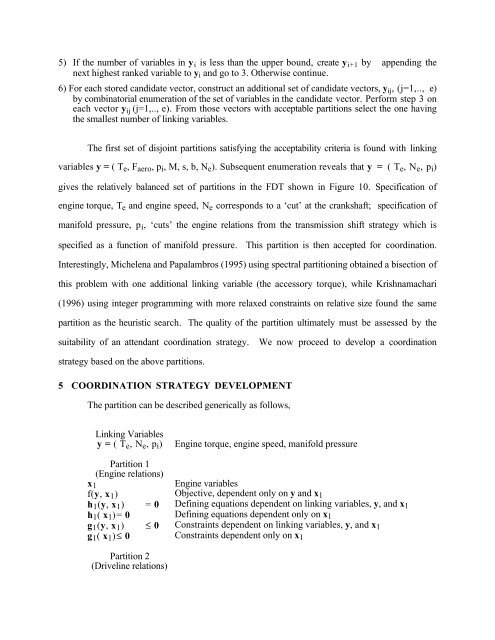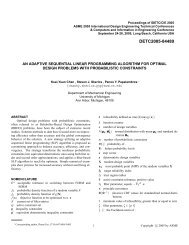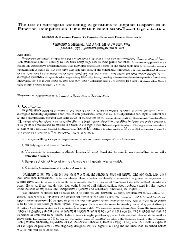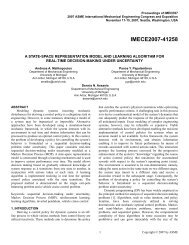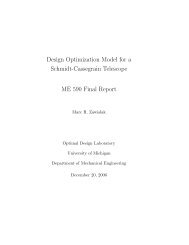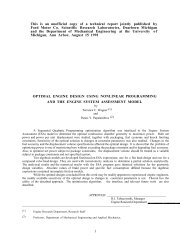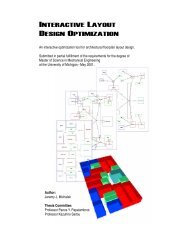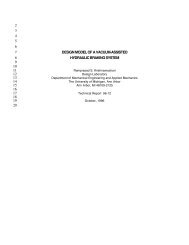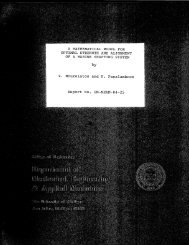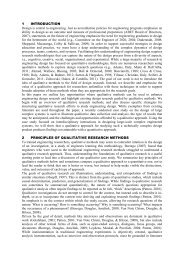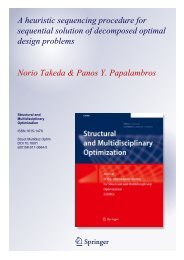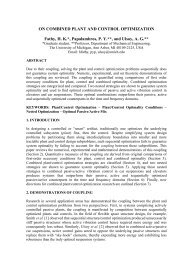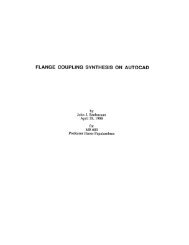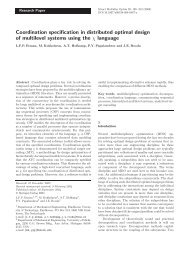Decomposition Analysis of an Automotive Powertrain Design ...
Decomposition Analysis of an Automotive Powertrain Design ...
Decomposition Analysis of an Automotive Powertrain Design ...
Create successful ePaper yourself
Turn your PDF publications into a flip-book with our unique Google optimized e-Paper software.
5) If the number <strong>of</strong> variables in y i is less th<strong>an</strong> the upper bound, create y i+1 by appending the<br />
next highest r<strong>an</strong>ked variable to y i <strong>an</strong>d go to 3. Otherwise continue.<br />
6) For each stored c<strong>an</strong>didate vector, construct <strong>an</strong> additional set <strong>of</strong> c<strong>an</strong>didate vectors, y ij , (j=1,.., e)<br />
by combinatorial enumeration <strong>of</strong> the set <strong>of</strong> variables in the c<strong>an</strong>didate vector. Perform step 3 on<br />
each vector y ij (j=1,.., e). From those vectors with acceptable partitions select the one having<br />
the smallest number <strong>of</strong> linking variables.<br />
The first set <strong>of</strong> disjoint partitions satisfying the acceptability criteria is found with linking<br />
variables y = ( T e , F aero , p i , M, s, b, N e ). Subsequent enumeration reveals that y = ( T e , N e , p i )<br />
gives the relatively bal<strong>an</strong>ced set <strong>of</strong> partitions in the FDT shown in Figure 10. Specification <strong>of</strong><br />
engine torque, T e <strong>an</strong>d engine speed, N e corresponds to a ‘cut’ at the cr<strong>an</strong>kshaft; specification <strong>of</strong><br />
m<strong>an</strong>ifold pressure, p i , ‘cuts’ the engine relations from the tr<strong>an</strong>smission shift strategy which is<br />
specified as a function <strong>of</strong> m<strong>an</strong>ifold pressure. This partition is then accepted for coordination.<br />
Interestingly, Michelena <strong>an</strong>d Papalambros (1995) using spectral partitioning obtained a bisection <strong>of</strong><br />
this problem with one additional linking variable (the accessory torque), while Krishnamachari<br />
(1996) using integer programming with more relaxed constraints on relative size found the same<br />
partition as the heuristic search. The quality <strong>of</strong> the partition ultimately must be assessed by the<br />
suitability <strong>of</strong> <strong>an</strong> attend<strong>an</strong>t coordination strategy. We now proceed to develop a coordination<br />
strategy based on the above partitions.<br />
5 COORDINATION STRATEGY DEVELOPMENT<br />
The partition c<strong>an</strong> be described generically as follows,<br />
Linking Variables<br />
y = ( T e , N e , p i )<br />
Partition 1<br />
(Engine relations)<br />
x 1<br />
f(y, x 1 )<br />
h 1 (y, x 1 ) = 0<br />
h 1 ( x 1 )= 0<br />
g 1 (y, x 1 ) ≤ 0<br />
g 1 ( x 1 )≤ 0<br />
Engine torque, engine speed, m<strong>an</strong>ifold pressure<br />
Engine variables<br />
Objective, dependent only on y <strong>an</strong>d x 1<br />
Defining equations dependent on linking variables, y, <strong>an</strong>d x 1<br />
Defining equations dependent only on x 1<br />
Constraints dependent on linking variables, y, <strong>an</strong>d x 1<br />
Constraints dependent only on x 1<br />
Partition 2<br />
(Driveline relations)


